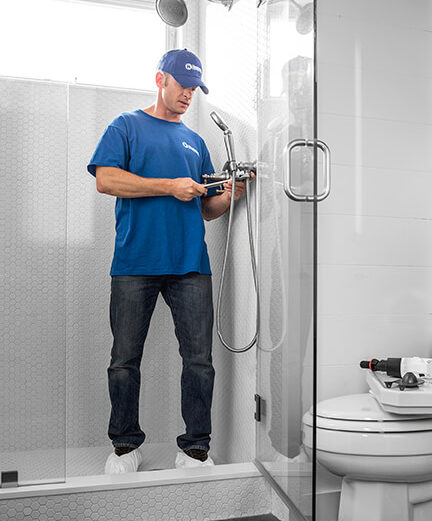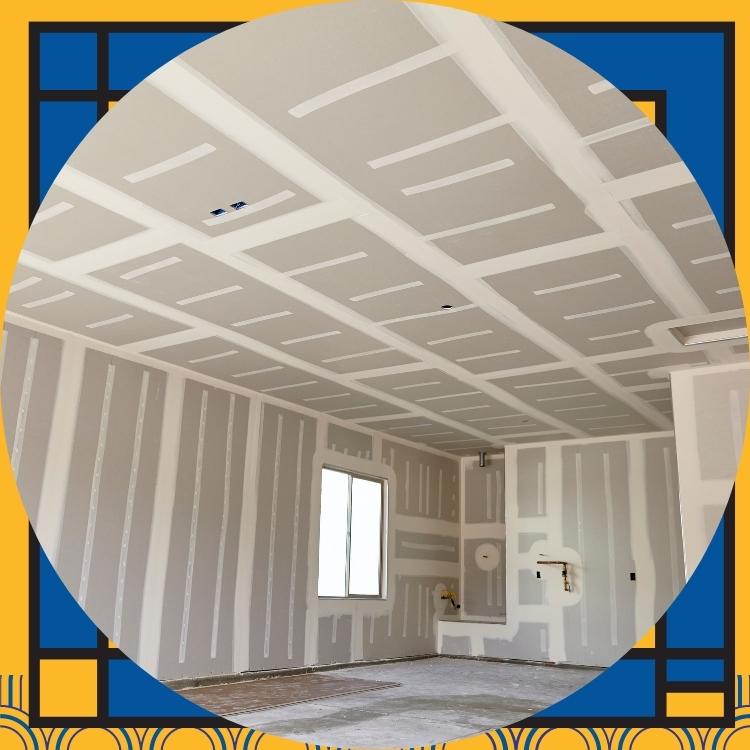We offer a wide range of services for that fresh look, or just maintenance or updates to keep your home functioning and safe. Regardless of the size of the job, we have a craftsman that can tackle it. We offer a wide range of services for that fresh look, or just maintenance or updates to keep your home functioning and safe. Regardless of the size of the job, we have a craftsman that can tackle it.

Drywall / December 17, 2021

Drywall is a popular, affordable choice for finishing off the walls and ceiling in your home. If you’re hanging your own drywall, or just had a contractor hang some sheets for you, then the next step is taping and mudding the drywall. Find out why these are essential steps in the process and see why it pays to choose professional services in Red Deer.
Drywall tape connects two sheets together but doesn’t have much else in common with office tape. It’s typically made out of paper or fibreglass mesh and needs to be attached to drywall by mud, also known as drywall compound.
Unlike other home repairs, this is best left to the professionals. This process requires a steady hand, plenty of drywall compound and lots of patience. An unprofessional installation can leave league bulges in the middle of your walls that won’t be covered up when you sand and paint them.
Tape is carefully lined up in the grooves in between sheets of drywall. Once properly installed, they can make the seams disappear to create a smooth, unified surface. If you’ve ever wondered how drywall can be transformed from separate sheets into a full wall or ceiling surface, then the answer is professional taping.
Some homeowners attempt to cover seams with mud alone instead of laying a layer of tape over them. This may appear to work in the short term, but eventually, the drywall panels will settle and shift. The seam will be far more likely to crack and separate if you don’t have a layer of fibreglass or paper tape covering it.
As a complementary step in the process of finishing off your home’s interior, drywall panels also need to be mudded. Mudding is the act of applying drywall compounds to cover up tape seams and screw or nail holes.
It requires a mudding knife and lots of drywall compounds. You need to carefully apply the compound and smooth it out to avoid creating ridges, bumps and bulges. Applying too much pressure as you mud can damage the tape seam and cause it to bubble when it dries.
Newly installed drywall needs at least two coats of mud over fastener holes and drywall tape. The process can be very time-consuming if you’re applying it with traditional drywall knives instead of professional tools. The professional-grade tools, however, are a significant investment for general home repairs.
Just like taping, mudding is a critical step to make home repairs and new drywall installation appear flawless. Whether patching a small hole in the wall or covering an entire ceiling, drywalling requires mudding to make those small holes and imperfections disappear.
A DIY drywall mudding job usually ends in frustration and unsatisfactory results. It can take a lot of experience to achieve a flawlessly smooth surface, and most professional contractors have a bag of tools and tricks to get the results you want.
A key step in the mudding process is sanding. Sanding drywall compound releases a significant amount of fine powder, which creates a dusty work area and a health hazard. It can take hours to sand down mud the right way, especially if you didn’t apply the mud correctly and created a lot of bumps and ridges.
Don’t spend days or weeks mudding and sanding drywall. Request an estimate for drywall services in Red Deer to see how quickly and affordably you can have your drywall professionally finished. See how local contractors can take separate drywall sheets and transform them into a single, smooth surface that’s ready to be painted.